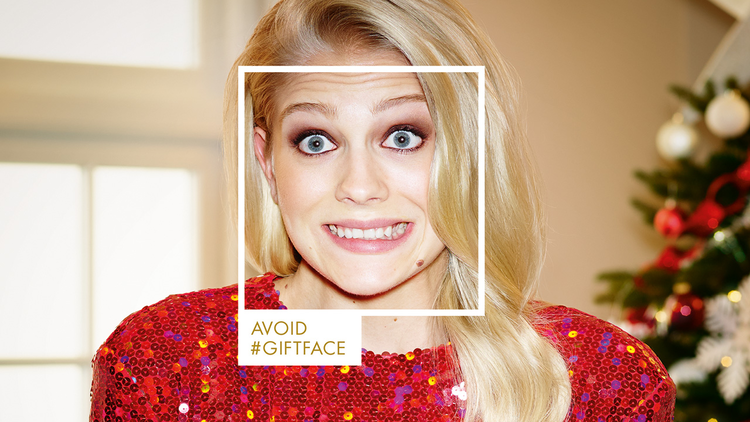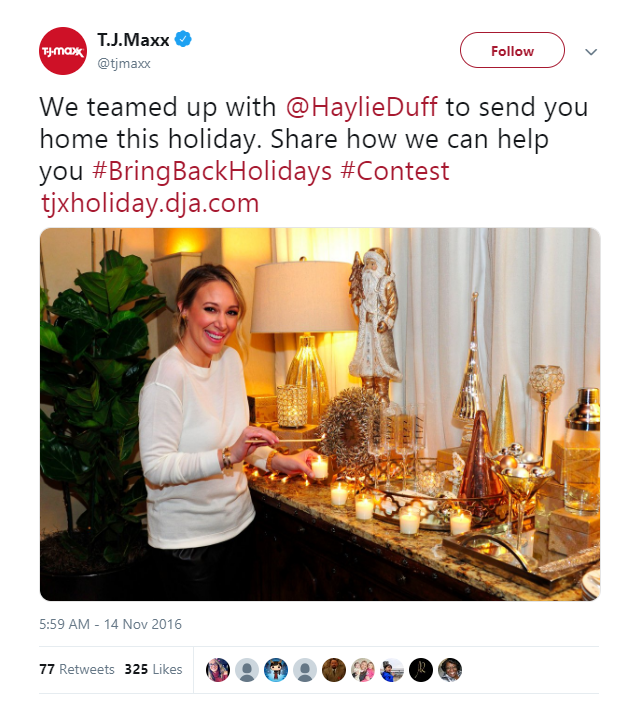Holiday Campaign Analysis: Fast Fashion Brands vs High-End Department Store Brands
A staple of the holiday season (and hands-down one of the best parts of the holiday season) are the holiday parties… and the chance to get dressed up for each one. Holiday parties present the perfect opportunity for fashion brands to do some savvy marketing to get their outfit ideas in front of party goers who are actively shopping for the best styles for their next big shindig.
For most shoppers the money is a driving force behind any apparel purchases. Fast fashion gives the masses easy access to a range of styles without blowing the budget. On the opposite end of the spectrum, high-end stores offer consumers a taste of luxury with high-quality garments that cost a lot more.
In this post, we’re going to dive into some of the best holiday marketing campaigns for getting eyes on your product. Take a look at these inventive, disruptive, and original campaigns from last holiday season.
Department Store Campaigns
JOHN LEWIS & PARTNERS
37 department stores, 12 John Lewis at home and 2 shops at St Pancras International and Heathrow Terminal
High-end British department store John Lewis & Partners is famous for their Christmas TV commercials. Every year, the British public waits with bated breath for the premiere of their ad – usually during the commercial break of hit TV show The X Factor. Their ads are filled with heartwarming moments, covers of hit songs (which almost ALWAYS end up climbing the charts to the number one spot), and incredibly shareable content.
2018 marks the twelfth installment of John Lewis’ iconic Christmas advert, and people are already talking about it and taking guesses on what it could be. Plus, since John Lewis is a department store, it sells a wide range of products, including fashion brands.
Where fashion is related, the company’s marketing largely targets shoppers who buy mid-priced and high-end brands like L.K. Bennett, Kurt Geiger and Karen Millen. As well, the company’s own line of products is high-quality with a high price tag. This hasn’t stopped them from being a popular holiday shopping destination though – far from it. John Lewis’ sales figures have been steadily increasing year-on-year, and the rising popularity of its Christmas ads could well have something to do with this.
In fact, for Christmas 2017, its fashion sales rose by over 8% – a significant increase for this retail giant, especially in such difficult financial times over in the UK.
Angle: Heartfelt
So, let’s take a look at their TV commercials that have caused such success for the brand in the past. Here is their 2017 ad “Moz the Monster”:
This year’s 2018 concept, “Some gifts are more than just a gift” features none other than Elton John. And it’s touching, relatable and brilliant.
A lot of other British brands have done their best to follow in John Lewis’ footsteps, creating ads that are emotional, imaginative and festive. While some of their attempts have been well-received, there’s no question that John Lewis & Partners dominates Christmas advertising over the pond. But, why have these other brands fallen short? It’s all to do with the way our brains work.
Here’s why John Lewis ads work
The John Lewis adverts don’t usually contain much branding. In fact, the only time we see the brand at all is usually right at the end as the commercial comes to a close. The reason the ads are so effective is because they tap into our emotions. We’re used to seeing commercials of this kind every year from the same brand, so we can still tell who’s advertising to us, despite the lack of branded material.
This doesn’t mean that we can’t take inspiration from what these guys are doing though. We just have to make sure that it works for our brand in a different way. Pulling on the heartstrings is nothing new in marketing – especially around this time of year. You just need to find a way to make it work for you.
In-store marketing
One thing that John Lewis does really well with its Christmas marketing campaigns is extending the message beyond just the digital space. The ad premieres on live TV, which is teased in the weeks leading up to it. Despite so many of us leaving scheduled TV behind and choosing to watch at our own pace, by showcasing their commercial during a popular show, they have many people tuning in, even if just to catch the world premier of the new John Lewis holiday ad.
The company also takes its campaign in-store with show stopping window displays across the country. For example, with last year’s “Moz the Monster” campaign, John Lewis actually had a window display that would break wind and burp in the same way as the titular character does in the ad. Not super Christmas-y… but definitely something different to draw the crowds, that’s for sure!
Online shopping is convenient, and great for shopping the myriad retailers that don’t actually have physical locations nearby (or physical locations at all). Still, every Thanksgiving, people line up for the chance to have that in-store experience despite the fact that they can take advantage of most Black Friday deals online.
Key Takeaways
- Develop your own style of Christmas marketing – don’t try and copy other brands.
- Make your marketing well rounded, not just focusing on digital.
- Don’t only focus your marketing online. A lot of gift buying at least still happens in actual stores.
HARVEY NICHOLS
16 Locations across Europe, the Middle East and Asia
Another British department store next (any guesses where this writer lives?) is Harvey Nichols. This is another brand that is known for its ads around Christmas time, but instead of pulling on people’s heart strings, Harvey Nichols does its best to tickle our funny bones instead. Harvey Nichols commercials are usually full of sass and wit, and show us what Christmas is really like for many of us.
Angle: Shamelessly Relevant
One ad that demonstrated this concept brilliantly was the company’s 2015 holiday ad battling the horrors of “Gift Face”. We’ve all been there, when someone has bought us a gift that really, is pretty awful, but we pretend to like it anyway. Harvey Nichols are showing us how to avoid this by shopping with them, of course.
Let’s take a look at the ad below:
The campaign ran mostly on digital, with social media posts sharing gift ideas to help people avoid inflicting the horrible “gift face” on other people, all accompanied by a grimacing face emoji. An incredibly shareable campaign that appeals perfectly to the store’s target market of younger consumers. While still a high-end retailer, Harvey Nichols is a slightly fresher brand than many others in this niche. Which can easily be seen through their choice of marketing style.
When Harvey Nichols talks about Christmas, it doesn’t follow the old trope of how it’s better to give than receive. No, these guys are much more honest about things, and fully believe that receiving a gift is way better – as long as that gift is good. Its tongue-in-cheek approach to festive marketing definitely helps them to stand out from all the emotional charged and mushy efforts made by its competitors.
And, as we may have mentioned before, standing out with your festive marketing is essential to success this time of year. This isn’t the first year Harvey Nichols has made waves with their marketing. A few years before in 2013, their ad campaign “Sorry, I spent it on myself” won a host of awards as well.
Harvey Nichols definitely built a reputation for themselves for fun Christmas marketing.
Expanding beyond digital
Harvey Nichols is another brand whose campaign worked perfectly outside of the digital space.This ad campaign ran on social media. The ad itself was uploaded to YouTube, and a number of social media posts were published to promote the in-store experience to go along with it.
The “Gift Face” campaign also translated perfectly to print ads. The amusing grimace of people opening badly thought out gifts works really well in their materials, and really helps to carry over the message to a different medium.

The brand also paired this with in-store product displays suggesting what to buy to avoid “Gift Face” as well as window displays – which are a huge part of the Christmas shopping experience for many consumers. Making this a well-rounded campaign, going beyond digital.
The Takeaway
- Know your target market and tailor your approach to Christmas marketing to what they like
- Humour can be a great vehicle for viral content, and to bring people into your store
- Playing on the more realistic aspects of the festive season can help your campaign stand out from competitors
Fast Fashion and Off-Price Campaigns
H&M
4,553 locations across North America, South America, Africa, Europe, Asia and Australia
High-street clothes giant H&M has more than 4,000 locations around the globe and a great range of everyday fashion at affordable prices. H&M has made a name for itself as a go-to store for the trend-conscious.
Angle: ‘Tis the Season for Giving
In 2017, H&M went all out with their Christmas campaign, employing the help of celebrity names like Jesse Williams, Nicki Minaj and John Turturro to help promote the brand in the weeks leading up to the holidays. The brand released a three-minute film and shared it online a month before Christmas to remind us that caring about others and giving of yourself are the real meaning of Christmas.
Through storytelling, the ad manages to show off a wide range of the brand’s products, both their casual range and their party / formal fashion pieces (H&M really squeeze A LOT of famous faces in this spot). I think more than department store ads, we actually get to see the products H&M was promoting for the holidays.
And, by employing celebrity faces as part of their campaign – and pretty faces they were – H&M used the age-old tactic of influencer marketing on a pretty grand scale.
Unlike the department stores, H&M focuses its festive marketing on clothing alone. With more products available, the department stores focus on a mixture of clothing and gifting, so their appeal is a little broader.
Expanding beyond digital
While the full version of the ad was only online, a shortened version was shown on TV for H&M’s Christmas commercial, reaching that all-important TV audience. This campaign also paired with a season-appropriate message of giving. The end of the story sees the young girl giving all her own presents away to children who lost theirs, mirroring H&M’s own commitment to giving donations to UNICEF. So, charity is a big theme.
H&M has always been at the forefront of giving back through fashion with the in-store clothes donation stations. This campaign helped to continue that message throughout the festive season. A lot of us like to do our bit for charity this time of year, so by advertising that buying with H&M would be helping Unicef, they are able to tap into this market effectively.
The Takeaway
Using well-known influencers helps to give your brand credibility, and draw in their followers as well as your own
Pairing up with a charity and giving back is not only good for the charity, but good for business as well
TJ Maxx
1238 locations across North America, Europe, Asia and Australia
One of the world’s largest discount stores, TJ Maxx, had their own unique spin on holiday marketing last year. They wanted customers to remember what Christmas is really about, beyond the food, the presents, and the parties – it’s about being with your family and loved ones. Together with Marshalls and HomeGoods, TJ Maxx launched a marketing campaign centered all around “love” rather than sales.
While many stores geared up for the holiday shopping season back in 2016 by launching Black Friday sales, TJ Maxx decided to take a different approach. The company decided to showcase how low their prices are year round. People don’t need to rush around making sure to catch the sales window to buy value gifts from this store!

TJ Maxx launched an inventive Twitter campaign where followers had the chance to win some exceptional festive prizes. But, they weren’t offering up toys, clothes, or gadgets. Instead, the retailer helped people enjoy Christmas the way it was supposed to be – with their loved ones. For the month of November, TJ Maxx ran three separate competitions in which people could win money to help them to either get home for the holidays or decorate their homes to make it nice and festive.
Angle: Tradition
TJ Maxx stood out because it focused on the “warm and fuzzy” side of Christmas that we all love the most… seeing friends, family, and loved ones; decorating our homes; and all the little traditions we enjoy love to follow. While other retailers focused on holiday sales, and the products they wanted to sell – TJ Maxx shifted the conversation to a happier, more wholesome topic.
Expanding beyond digital
While their competitors plastered the word SALE across every window display through the festive season, TJ Maxx swapped it for LOVE. The company helped to raise money for local food banks across the country by donating 100% of the money it raised for the cause. The retailer actually raised and donated about $2 million dollars.
TJ Maxx was one of few stores that chose to close on Thanksgiving, in keeping with their holiday message, and allow the staff to spend the time with their families instead of working in the store. Nice.
The Takeaway
Sales are always important, but remember what the holidays are really about, and your customers will appreciate it
If you’re going to run a competition on social media, consider offering up different prizes to your competitors
Be sure that your companies actions around the holiday season reflect the message you’re putting out there.

Conclusion
At this time of year, everyone wants to get ahead of the competition in terms of holiday sales. The fashion brands we looked at today are just a small section of examples of how traditional Christmas marketing can be turned on its head. So, whether you choose to hit the heartstrings or draw people in with laughter, the key to a successful marketing campaign is to stand out from the ever-increasing crowd.
If you only take away one piece of advice from this article though, let it be this: the customer is key. All of these brands knew exactly what their target market looks like, and tailored their strategies to that information. If you’re working with millennials, then play on the relatability and social media communication. If you’re targeting baby boomers, focus on the family aspect of the festive season across TV and print. Knowing your customer is the key to success.
What have been your favorite fashion campaigns this holiday season? Let us know in the comments below.







